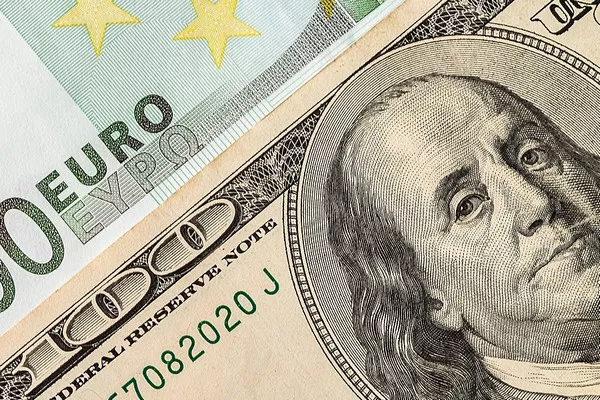The recent focus in the financial markets has centered on the US Consumer Price Index (CPI) data and the subsequent market reactions, which have provided valuable insights into the current economic landscape.
US CPI Data Recap: The data in question closely aligned with market expectations. The overall CPI monthly rate stood at 0.4%, translating into an annual rate of 3.7%, a slight increase from the 0.3% monthly rate. Meanwhile, core inflation registered a 0.3% monthly increase and a 4.1% annual rate, slightly lower than the previously observed 4.3%.
Market Reaction: Market participants initially reacted with caution, influenced by Federal Reserve Vice Chairman Jefferson’s suggestions that recent increases in long-term (real) yields were equivalent to a potential 25-basis-point Fed rate hike. However, the market’s response, post-CPI data release, indicated skepticism about the effectiveness of this move. Inflation in September, although in line with expectations, remained below the 2.0% inflation target. The market has, for now, set aside Jefferson’s assessment, as monthly dynamics of 0.3-0.4% suggest the battle against inflation is ongoing. In response, longer-term bond yields experienced a significant uptick, with a notable surge in yields seen during the $20 billion 30-year Treasury auction. By day’s end, yields on US bonds increased by 8.7 basis points (2-year) to 16 basis points (30-year), while the real yield on the US 10-year Treasury note rose by 8 basis points. In hindsight, the Fed’s communication about raising long-term interest rates was not as straightforward as the market expected. It appears that the market believes the Fed has more work to do.
Market Consequences: As a result of these developments, the US stock market witnessed a rebound following an initial dip, ending the day with approximately a 0.5% to 0.6% decline. The US dollar gained strength, reflected in the US dollar index’s rise from 105.7 to 106.6. USD/JPY has again neared the 150 barrier, closing at 149.81. While EUR/USD initially tested the resistance area around 1.0635-1.0643, it later retraced to close around 1.053.
Asian Markets and US Treasury Yields: Asian markets faced pressure from higher US (real) yields and a decline in US stocks during the previous day. Market sentiment was not swayed by data from China or headlines regarding other Chinese government measures to bolster markets. US Treasuries recovered slightly from modest losses after the prior day’s sell-off, and the US dollar experienced a mild decline (EUR/USD 1.0545).
Looking Ahead: The market will be closely monitoring the University of Michigan’s Consumer Sentiment Index, which includes inflation expectations data, for its potential market-moving impact. Notably, the market action on core yields suggests they are well protected ahead of the Federal Reserve’s policy meeting on November 1. A consolidation pattern may be emerging for the US 10-year yields, ranging between 4.50% and 4.90%. The US dollar is once again leading the way, affecting stock market gains as geopolitical tensions persist. The possibility of EUR/USD revisiting its corrective lows of 1.0448 should be kept in mind. Additionally, investors will be paying attention to the commencement of US earnings season, with several major banks releasing earnings data today.
News & Views:
In China, September’s inflation rate saw a 0.2% increase on a monthly basis, with year-on-year growth remaining flat, whereas the market anticipated a 0.2% year-on-year increase. Notable details included a 0.9% year-on-year drop in consumer goods prices, while service sector inflation remained positive at 1.3%. Food prices witnessed a notable decrease, down 3.2% year-on-year. Household products (down 0.4% year-on-year) and transportation and communications (down 1.3% year-on-year) were among the product categories experiencing reduced price levels.
China’s Producer Price Index exhibited a 0.4% month-on-month increase in September, marking the most significant surge since April 2022. On a year-on-year basis, the index shifted from -3% to -2.5%, influenced by weakening base effects and rising oil prices.
China’s trade surplus rose to US$77.71 billion in September from the US$68.2 billion reported in August. Despite this apparent improvement, the underlying picture is less optimistic, with imports decreasing by 6.2% year-on-year, signifying weak domestic demand. Exports also fell by 6.2% year-on-year, underscoring evidence of sluggish global economic growth. The yuan remains in a weakened state against the US dollar, with USD/CNY at 7.30. Chinese stocks experienced a 1-2% decline this morning, in line with global trends, despite rumors of China considering the establishment of a state-backed stabilization fund to boost market confidence.
Argentina’s central bank has raised its policy rate by 15 percentage points to 133% due to accelerating consumer price inflation in September, with a monthly rate increase of 12.7% and an annual rate of 138.3%. Privately, there are efforts to support the Argentine peso, which is currently trading at a rate of 1,040 Argentine pesos (the “blue dollar rate“) compared to the official rate of $350. Leading candidate Milei has been encouraging Argentines to stop saving pesos, advocating for the replacement of the national currency with dollars (dollarization). The currency is under increased pressure in the lead-up to the October 22 election.


